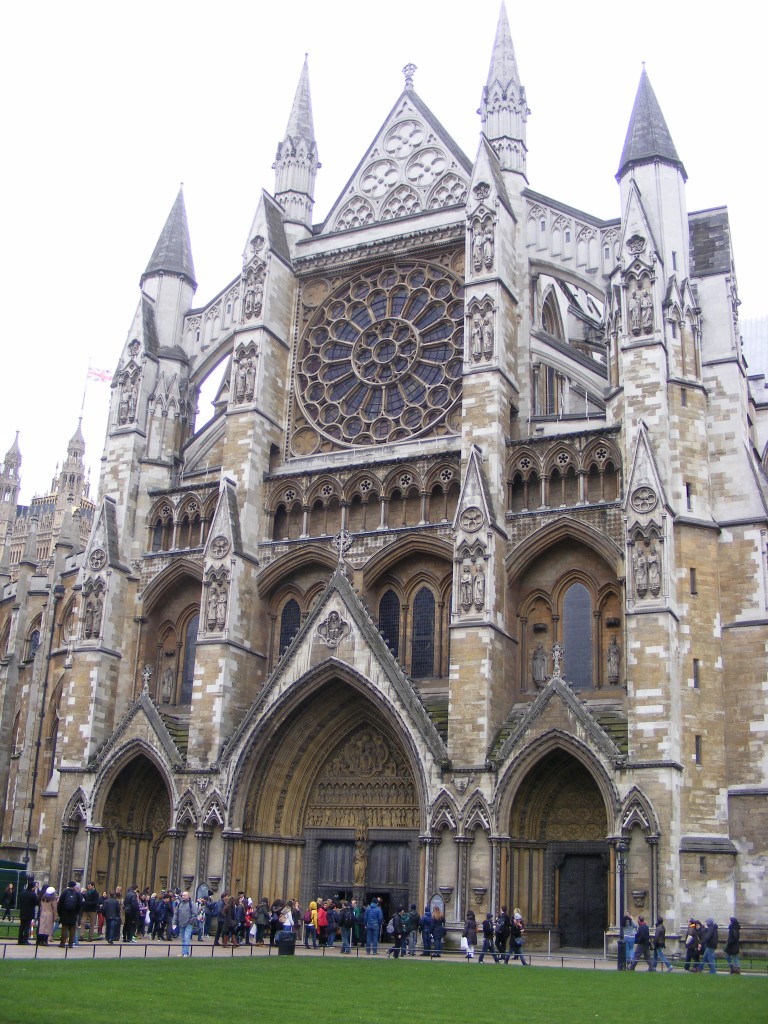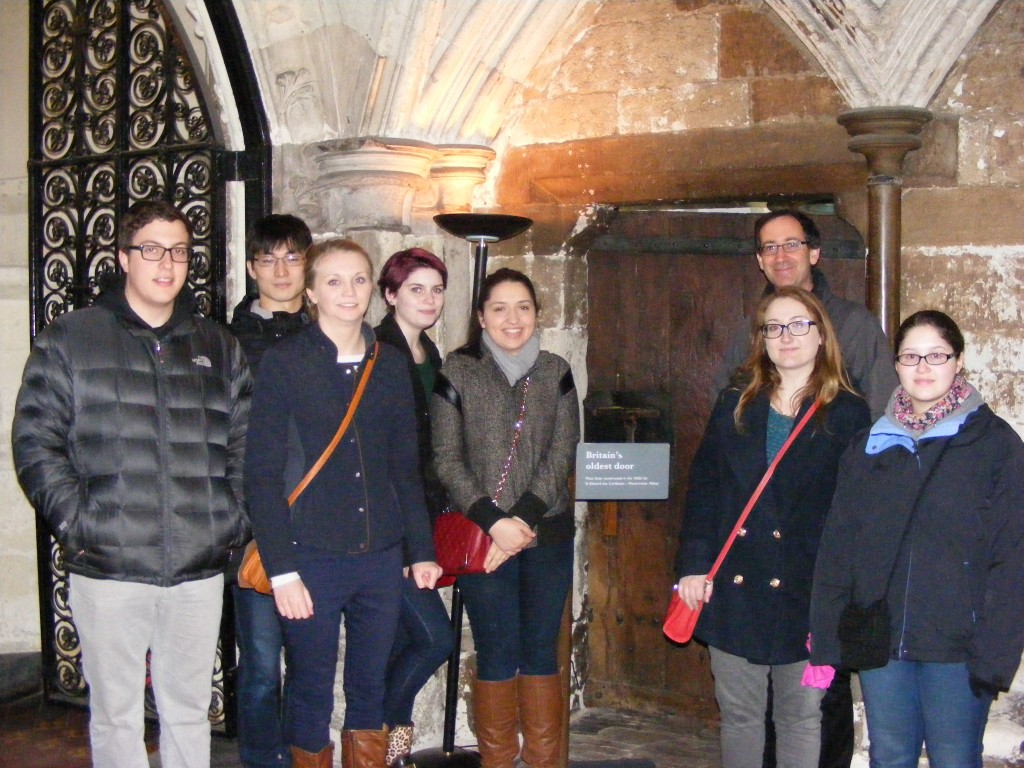In England, one of the places where national identity can be felt is Westminster. It may not need to be a place and indeed it can be felt through literature, music, artworks, artefacts, landscape or even ideas. But historical importance of Westminster is obvious. There is no remnant of Old St Paul’s Cathedral but a few of the Palace of Whitehall, and therefore along with the Tower, Westminster Abbey is one that provides us with some of the surviving, tangible evidence of the legacy of medieval London today.

We entered the abbey through the cloister, which is the part older than the church (the abbey began its life as a Benedictine monastery in the tenth century, although its roots are intertwined with legends). Cloistered, undisturbed by the noise, it is an ideal space for meditation not only for monks but also the public. The presence of memorials of the lost lives during the wars on the walls testifies what kinds of people might come to this place.
The church is remarkable in two points. One is its architectural mastery, and the other is its close association with some of the prominent figures the nation has produced. The church is built in the Gothic style, typical for its high vault and stained glasses. An airy, vast space above the nave is enabled with the support of flying buttresses on both sides of the building. With the light coming in through the glasses and a singing voice of the choir resonating, the space would create an atmosphere similar to the cloister.
At the heart of the church there rests Edward the Confessor, the founder of the church, surrounded by his successor kings. The high altar is placed at the screen, because Henry VII, the founder of the Lady Chapel, rests in the apse at the east end. The arrangement is also because the church – embracing the tombs of some of the prominent figures who contributed to the glory of the nation as well – is no longer exclusive of the general public, who used to have a limited access to the altar that had been placed beyond the screen.

Inside the church, it is not to be unnoticed that Mary I and Elizabeth I rest side by side. It is symbolic of the religious and political reconciliation between different denominations Elizabeth endeavoured to achieve, blending Edward VI’s Protestantism and Mary’s Catholicism and, consequentially, laying out the foundation of the Anglican Church. The sight does induce the recollection of such an aspect of the national history.
Moving to the National Portrait Gallery, we faced Tudor monarchs, an archbishop, royal servants, Elizabeth’s entourage, an explorer and others. Their riches are amply displayed, yet in contrast their faces are serious – as if they want to tell us something (perhaps justification of their acts and decisions). It is surprising to think how we perceive them differently through different media. In the church, we know they are dead and we can feel it. In the gallery, we know they are dead but their semblance on panels disturbs that belief. Perhaps so long we talk and think about them, they will be remembered continuously.